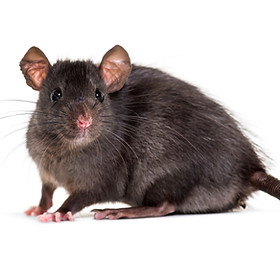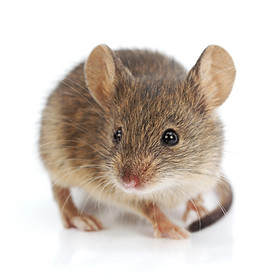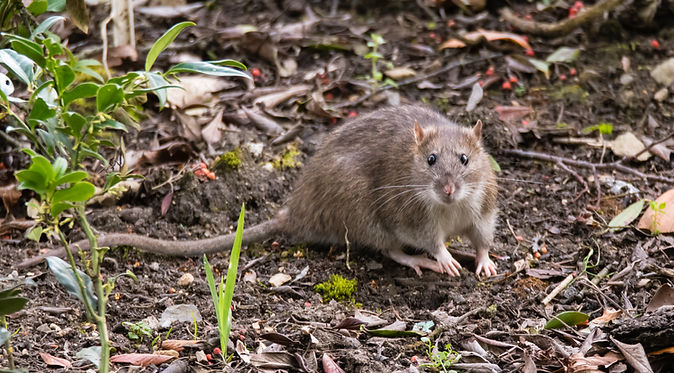Some people think they are cute, we do not. Rats and mice are dirty, they don't wash their hands before eating your food. They are scavengers and will eat almost anything. Rats and mice only need a 12.5mm and 6mm hole respectively to gain access into your house. You are concerned for your children or pets coming into contact with them. They can cause significant damage to your property, including:
Or they simply freak you (or your partner) out whenever you see them.
Request a Booking



Rodents (from the Latin "rodere" meaning "to gnaw") are likely to send most people running in the opposite direction at the mere sight of them. And with just cause!
Rodents are serious pests that affect many urban communities, homes and farms throughout Australia. Not only do they spoil food by eating or contaminating it, rodents are also responsible for causing physical damage and spreading one of the deadliest disease outbreaks in human history: the Black Death (or bubonic plague as it is also known), which claimed the lives of 25 million people in 14th century Europe.
After humans, these animals are some of the most successful mammals on the planet. They are exceptionally well adapted to living in close proximity to humans, having learned to exploit human resources for their survival. Humans provide the key ingredients to their existence: food, water and shelter. Wherever humans are, rodents are, and the availability of these basic resources influences their number and distribution.
Australia has around 60 species of native rodents, eight of which are native rats (Rattus) that evolved from ancestors introduced to the country around 1 million years ago. The common roof rat or black rat (Rattus rattus) was likely imported into Australia with the arrival of the First Fleet, where it literally jumped ship. The roof rat is now one of the most widely distributed animals globally (after humans and house mice), with the species living on every continent in the world, Antarctica excepting.
Along with the roof rat, the two other introduced pest rodents in urban Australian environments are:
It is not surprising that many countries have introduced legislation aimed at managing and reducing rodent infestations.
Rats and mice pose a serious threat to human health. Of the many diseases transmitted to humans from rodents, the most sinister and extensive is the distribution of food-poisoning organisms caused by the contamination of food, food packaging and food preparation areas with urine, faeces and hairs.

THE ROOF (BLACK) RAT (Rattus rattus)
Also known as the ship rat, this rat sailed with Captain Cook, coming ashore in Australia with the First Fleet!
Learn More

THE NORWAY (BROWN) RAT (Rattus norvegicus)
This rat can "sing", communicating with others through high pitched vocalisation!
Learn More

THE HOUSE MOUSE (Mus musculus)
This breeding machine can multiple to plague proportions, devastating crops & livestock in their wake!
Learn More



The first clue of a rodent infestation is finding their droppings. Droppings may be found anywhere, however they are most commonly found in kitchen cupboards, drawers and pantries (where there is food!). Other key signs of a rodent infestation includes:
Nesting
Rats and mice are social animals, living in nests constructed out of whatever soft materials they can find. Whilst each rodent has nesting behaviours typical to their species, both rats and mice may live and nest within a building for an indefinite period, provided they have safe access to food, water and shelter. Often, however, they will enter a building only seasonally, such as during the colder winter months, where an internal environment is likely to provide more comfortable nesting and breeding conditions, and where access to food and water is likely to be more abundant.
Feeding
Both rats and mice are typically considered to be omnivorous scavengers in their feeding habits, eating a variety of food items (grains, meats, fruits, vegetables, fish, etc.). Their need for water varies: the roof rat is capable of reducing their water intake if their food has a high moisture content; the house mouse is highly adaptable and can live on the moisture found in a grain without the need for any supplementary water; whereas the Norway rat requires regular access to water. Rats will hoard enough food to last them a number of weeks, and both rats and mice will hoard food in what they consider to be safe dining places. Mice will nibble and feed at several different safe dining locations.
Nocturnal
Rodents are nocturnal animals, typically feeding at night when their natural predators are otherwise inactive. Daytime sightings and activity are often indicative of a large infestation.
Travel
Rats are very much creatures of habit, using the same routes to travel to and from food sources. They are often referred to as being “neophobic”, as they have a tendency to dislike anything new. Mice, by comparison, although seemingly cautious, are very curious and adventurous. Both rats and mice are competent climbers (the roof rat more so than the Norway rat), and the Norway rat is an accomplished swimmer, capable of negotiating S-bends in toilets and swimming in a 48km/h current without drowning!
Grooming
Rats and mice often groom themselves when at rest, licking their fur and feet. Rats typically groom once or twice a day, whereas mice will groom themselves much more frequently. Both rodents also have a need to constantly gnaw. This gnawing habit is necessary to control the size of their characteristic front incisor teeth. It is also this gnawing habit that causes serious damage to doors, skirting boards, water pipes, electrical cabling, upholstery, books, food containers & packaging, equipment and machinery. Gnawing has brought down telephone systems and short-circuited electrical panels, in the most extreme cases, causing fires.
At Defender Pest Control Specialists, our rodent treatment consists of a thorough inspection to determine the extent of the infestation and to ensure the noises you are hearing are not Possums, a native protected animal. This includes an inspection of the ceiling cavity, subfloor (if applicable), internally and around the perimeter of the premise.
Our Technician will use a range of treatment methods to target the infestation:
Large infestations may require a follow up treatment. These are typically conducted 1-2 weeks after the initial treatment to check bait consumption.
Prevention Tips!
There are many actions homeowners can take to prevent a rodent infestation in their home. The most effective include:




View Our Areas of Services
Abbotsford, Armadale, Auburn, Balwyn, Bayswater, Berwick, Blackburn, Boronia, Box Hill, Brighton, Burwood, Camberwell, Canterbury, Cranbourne, Cremorne, Croydon, Dandenong, Doncaster, Fairfield, Forest Hill, Frankston, Glen Iris, Glen Waverley, Hawthorn, Kew, Kilsyth, Langwarrin, Mitcham, Mooroolbark, Mount, Mulgrave, Narre Warren, Nunawading, Officer, Pakenham, Ringwood, Rowville, Toorak, Vermont, Wantirna, Windsor


